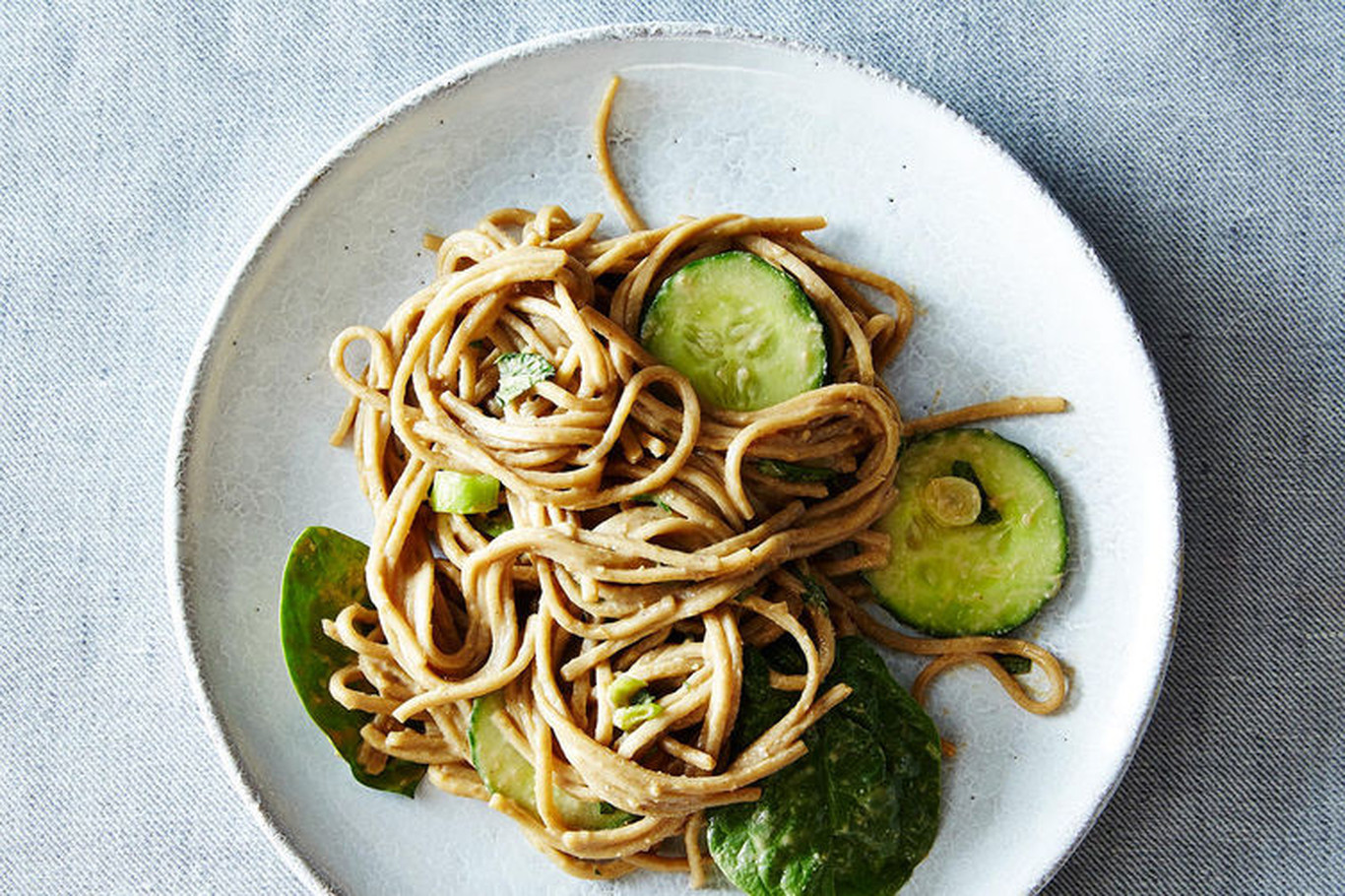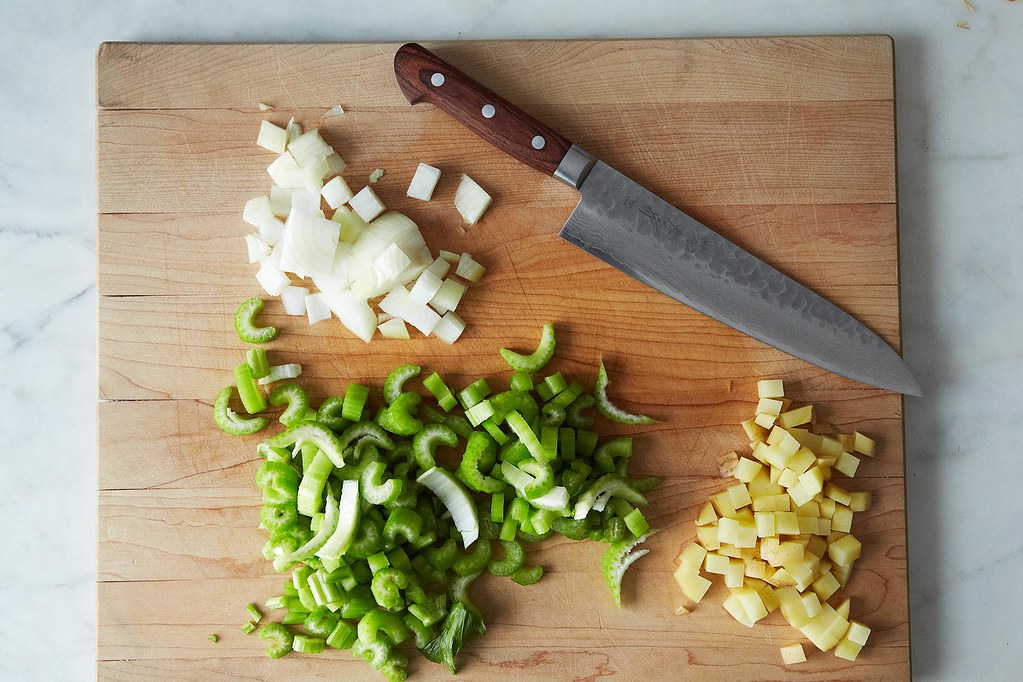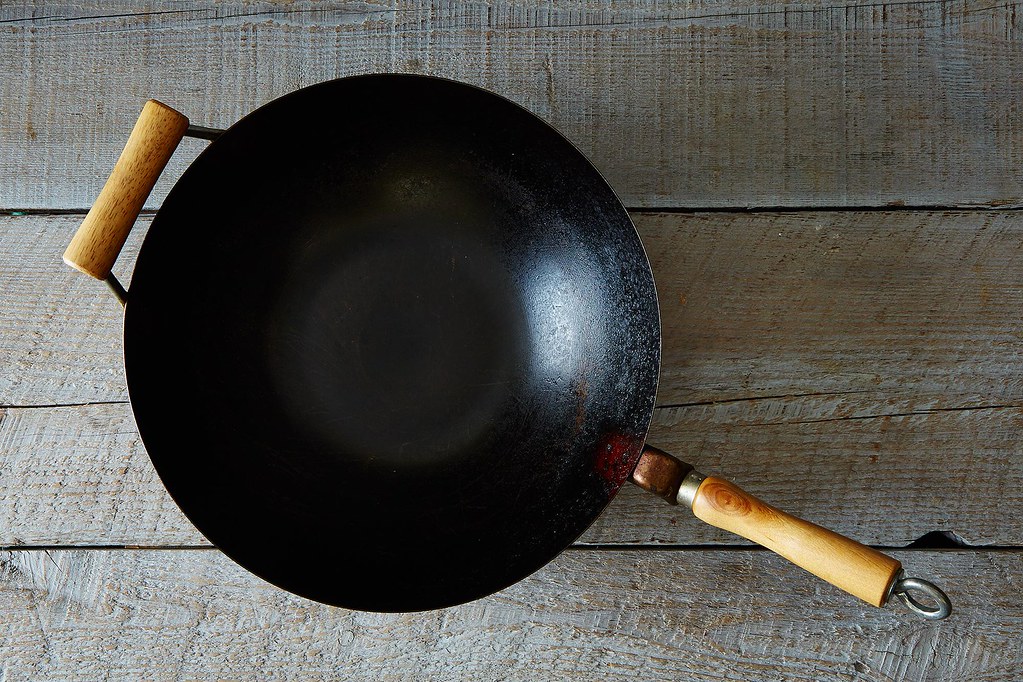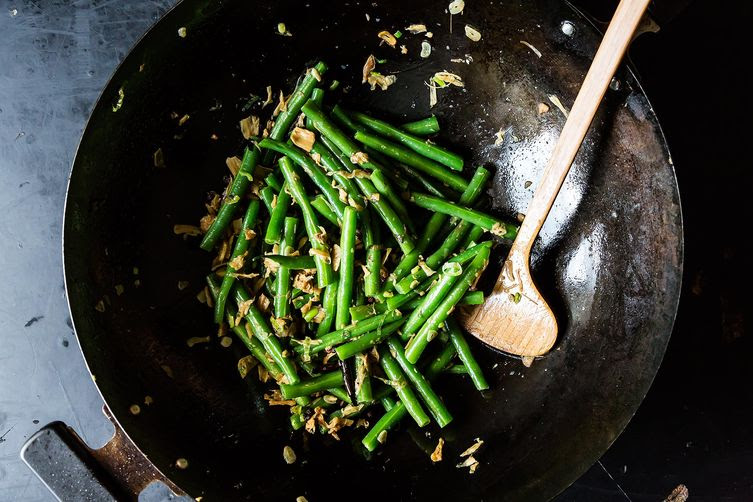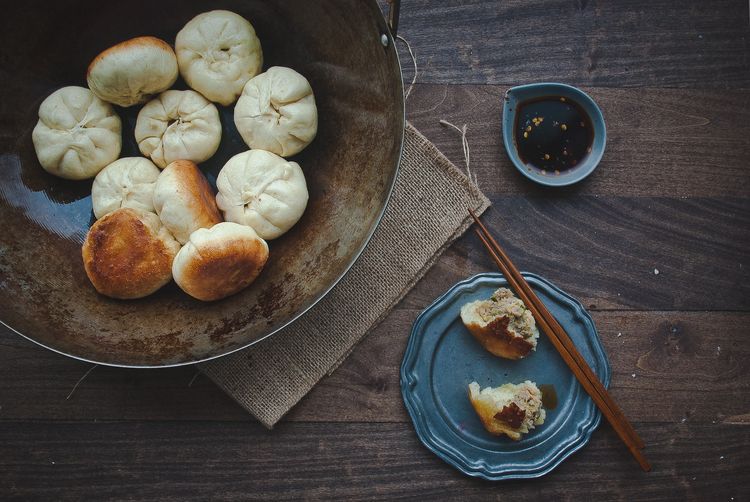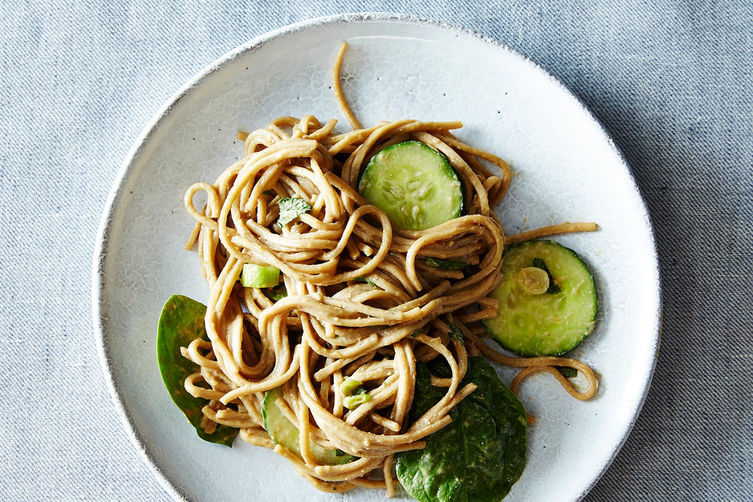Contrary to popular belief, you probably can cook many of your favorite Chinese dishes with whatever is already sitting around in your kitchen. But part of the pleasure of making good food is having the right tools for the right job, and as the Chinese have had thousands of years to think about things like this, they’ve come up with some pretty wonderful ways to create delicious things to eat. Here are some of my all-time favorites:
1. Wide knives and heavy cleavers practically symbolize Chinese cooking equipment.
Cleavers are heavy and thick, as they are designed to whack through bones. Chinese knives, though, are thin, light, and easy to wield. I like to have these knives in a variety of widths—2 inches are good for things like vegetables, while blades that are 3 or more inches wide are great for just about everything else. Look for good steel with a sharp edge; the top edge of the blade should extend through the handle for stability. As you try out each knife, look for something that feels comfortable. Hold the blade with your middle, ring, and little fingers while your thumb and forefinger grasp either side of the blade, as this will make the knife an extension of your hand. (This video shows the correct grip.)
2. Woks are simply wonderful.
Yes, you can certainly stir-fry, braise, and do any number of other things in nothing fancier than a frying pan or Dutch oven, but a wok is perfectly designed to concentrate all of the heat at the bottom, with gently sloped sides that offer cooler areas for your food to rest. The shape of a wok is also specifically devised to easily toss your foods, which means that with a little practice, you can learn to shake and flip things like meat and vegetables without the need for a spatula.
Northern-style woks have long handles, while southern ones have two looped handles on the top edge. Get a wok made out of hammered steel (nonstick ones are flimsy) that will gain a gorgeous patina as the years pass. Your wok should come with a close-fitting cover and a wok ring if you cook on electric burners.
3. There are at least three different kinds of steamers, and steamed foods are beloved just about everywhere.
Not everything is stir-fried in China, of course. The three main types of steamers are typically so inexpensive that you should considering having them all. Metal basket steamers are shaped much like bamboo basket steamers, but are much easier to clean; bamboo ones, though, are terrific for things like steamed bread, as water does not collect inside them. And when you have something particularly large that needs to be steamed—like a whole fish or chicken—the best way to do this is on a trivet set inside a wide wok with a glass cover; just be sure not to use that wok for stir-frying after that, as the patina will have disappeared. Rinse your wok without soap and then wipe it dry.
4. The two most common utensils used in Chinese cooking are spatulas and ladles.
Wok spatulas basically come in two basic varieties: metal and bamboo. Both are used to toss things around in a wok, but I especially like the metal variety because I can pour things into it and then quickly eyeball whatever it is I’m adding, rather than carefully measure it out. Chinese ladles have lovely basins that are flush with the handle. The best metal spatulas and ladles are made of light stainless steel with wooden grips; avoid the flimsier models that have easily breakable plastic handles. All bamboo spatulas are basically the same: flat and made out of a single piece of carved bamboo. As with all things bamboo and wooden, hand wash these to keep them from cracking.
5. Little casseroles called “sandpots” in Chinese are inexpensive and wonderful to cook with.
The outside of the pot is plain whitish clay, while the inside is usually glazed a dark brown, as is the top of the lid. Metal wire is strung around the outside of the pot in a loose mesh to protect it, but the pots are actually a lot tougher than they look. Sandpots are great for braising, cooking rice, and soups, and they come in a variety of sizes—some with a thick handle on the side and others with two loops on the top. Have the shopkeeper fill the pot with water before you buy it to ensure that it is watertight. Hand wash the pots and lids, and then air dry.
6. Another important cooking vessel comes from the highlands of south-central China: the steampot.
Originating in the province called Yunnan (literally "south of the clouds") the steampot is traditionally made from smooth red clay. What makes it unique is the spout that pokes up in the middle. When a covered steampot is placed over a vat of boiling water, the steam works its way into the pot and cooks the ingredients while forming a delicious broth. The meats slowly poach in this broth, and since it is made mainly out of meat juices, steam, and seasonings, the resulting soup is rich and flavorful. These come in a variety of sizes to fit any type of household.
7. Ginger graters are ingenious things.
Bamboo is cut into rows of sharp teeth that are tacked together on a bamboo frame. When you scrape fresh ginger against these teeth, the soft flesh slithers to the bottom while most of the tough fibers remain attached to the ginger root. I love my ginger grater but treat it with great respect, as these teeth can easily remove my knuckles in the process. Be that as it may, I can think of no better way to make ginger juice than to squeeze the resulting ginger mash over a cup. It’s fast, easy, and much less fuss than a juicer.
8. Chinese rolling pins are simplicity embodied.
They are basically inch-wide dowels of plain wood, so you can make one yourself, if push comes to shove. These pins are around a foot long and have the same diameter all the way around, much like baker’s rolling pins. You can also find ones that are slightly tapered at either end, like a French rolling pin. Wipe them off after using and oil as necessary.
9. Chinese cooks who revel in smoked meats, poultry, and fish typically have a smoker.
Smoked foods are adored throughout much of China, and so many Chinese cooks tend to have a smoker hanging around the kitchen somewhere. You can buy stovetop smokers that work quite well, or you can make one out of an old wok using these directions.
Photos by Bobbi Lin, Alpha Smoot, James Ransom, Linda Xiao, Cynthia of Two Red Bowls
This article was written by Madame Huang from Food52 and was legally licensed through the NewsCred publisher network. Please direct all licensing questions to legal@newscred.com.


